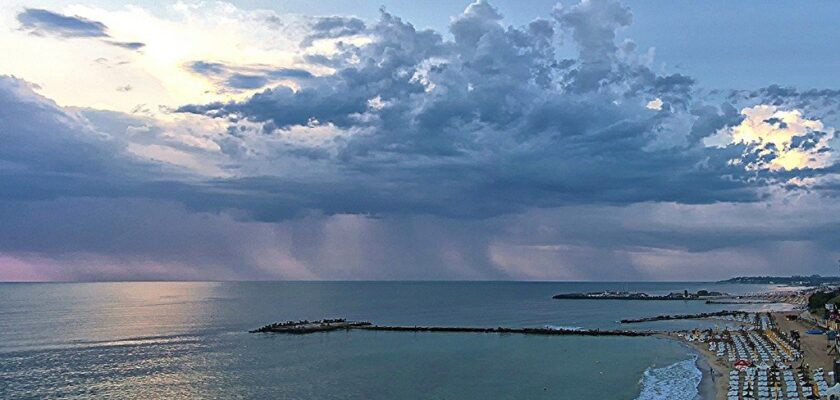Black Sea
This attraction is related to the countries:RussiaRussia , UkraineRussia , RomaniaBulgariaTurkeyAbkhaziaGeorgiaBlack Sea is an inland sea of the Atlantic Ocean basin. It is connected to the Sea of Marmara by the Bosphorus Strait, and then, through the Dardanelles Strait, to the Aegean and Mediterranean Seas. The Kerch Strait connects with the Sea of Azov. The Crimean Peninsula cuts deeply into the sea from the north. On the surface of the Black Sea is the water border between Europe and Asia Minor.
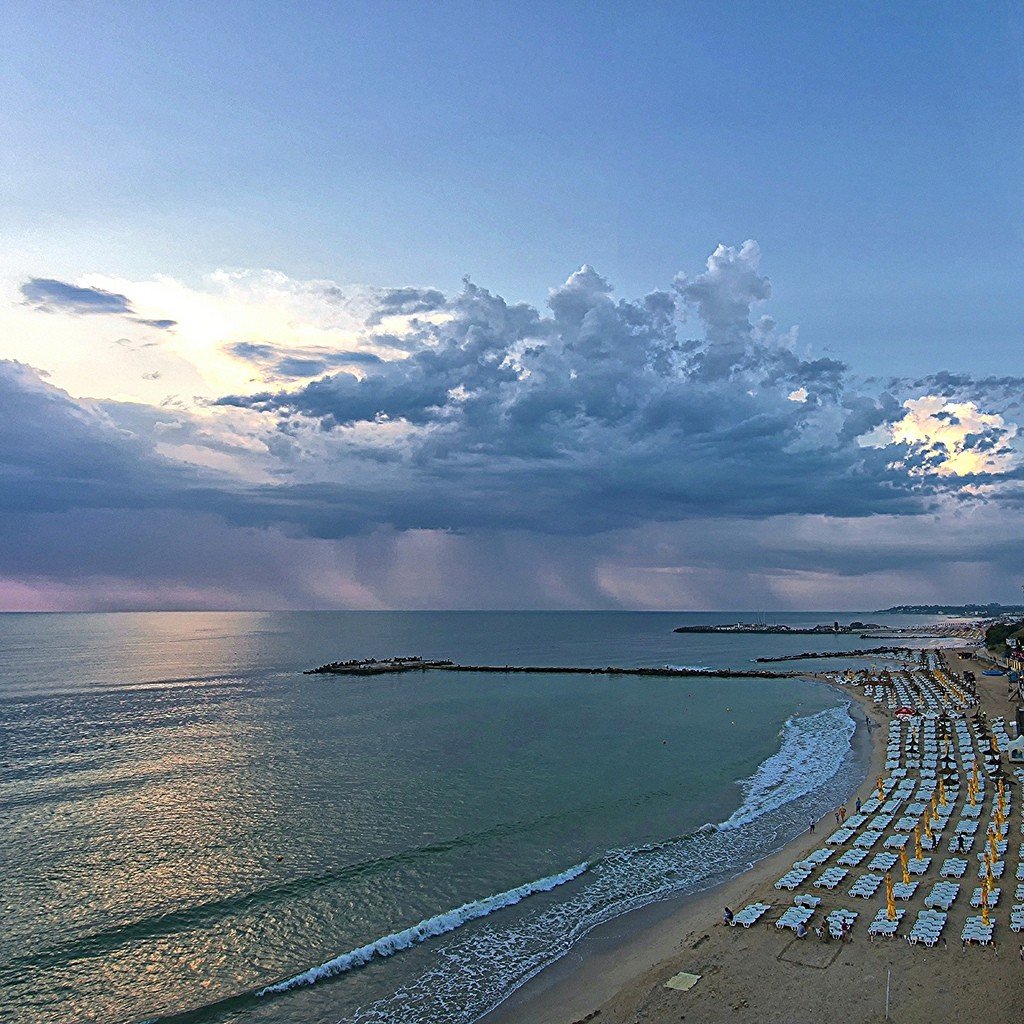
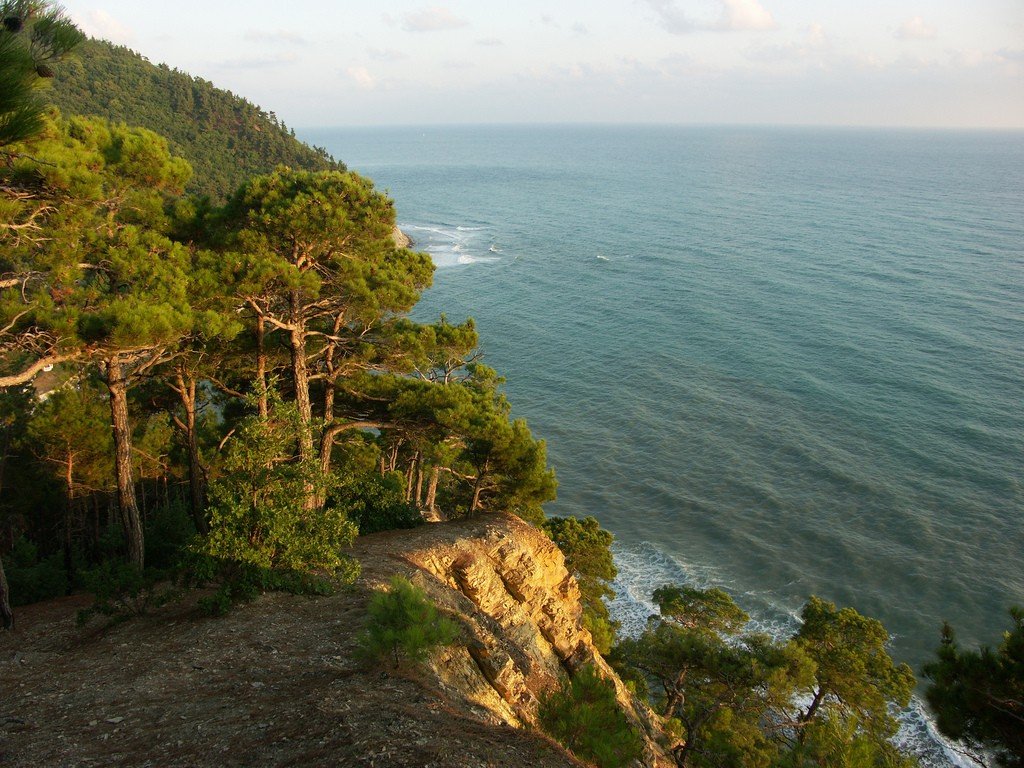
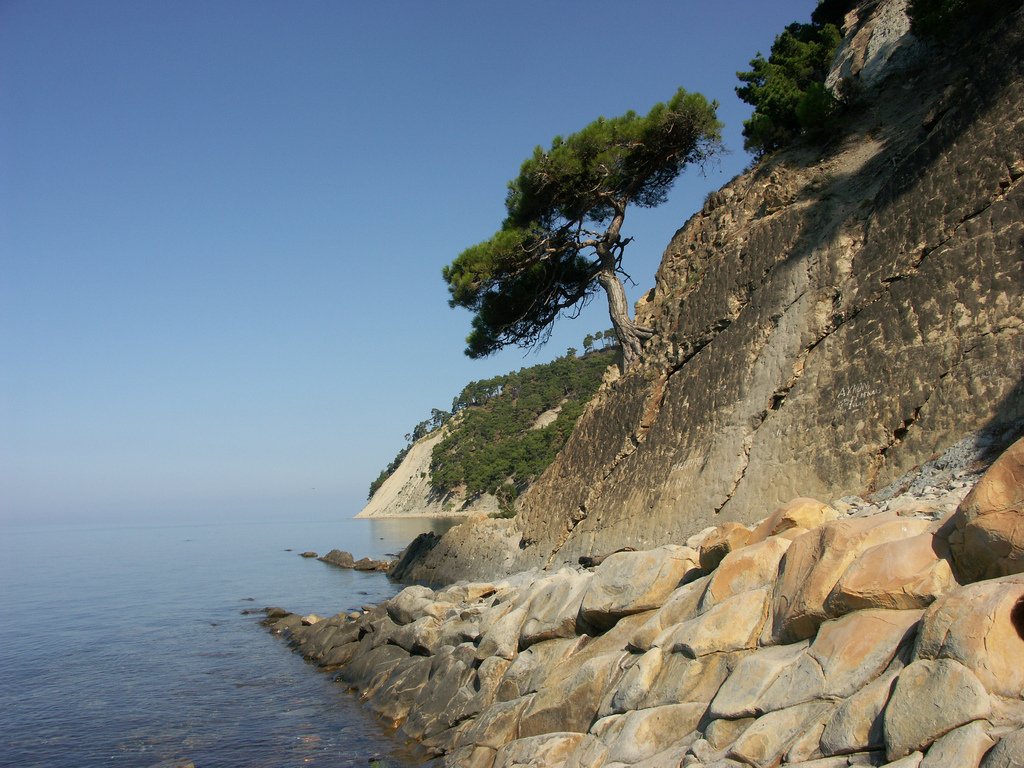
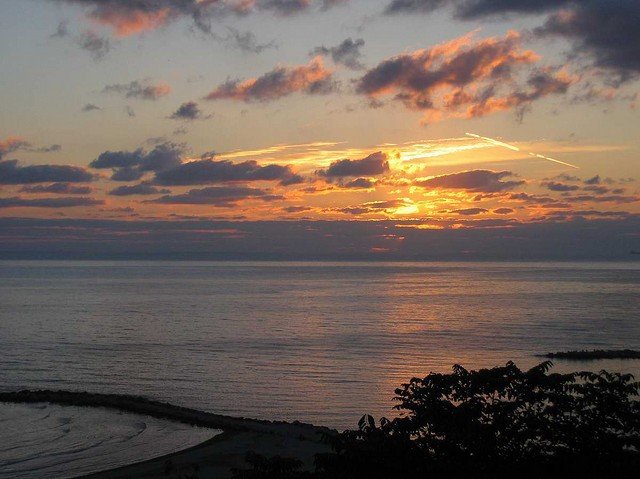
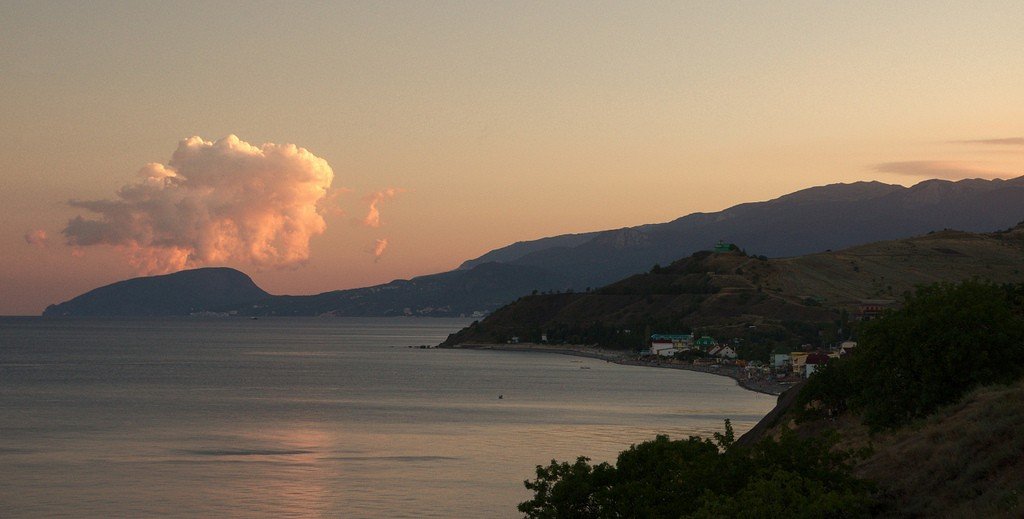
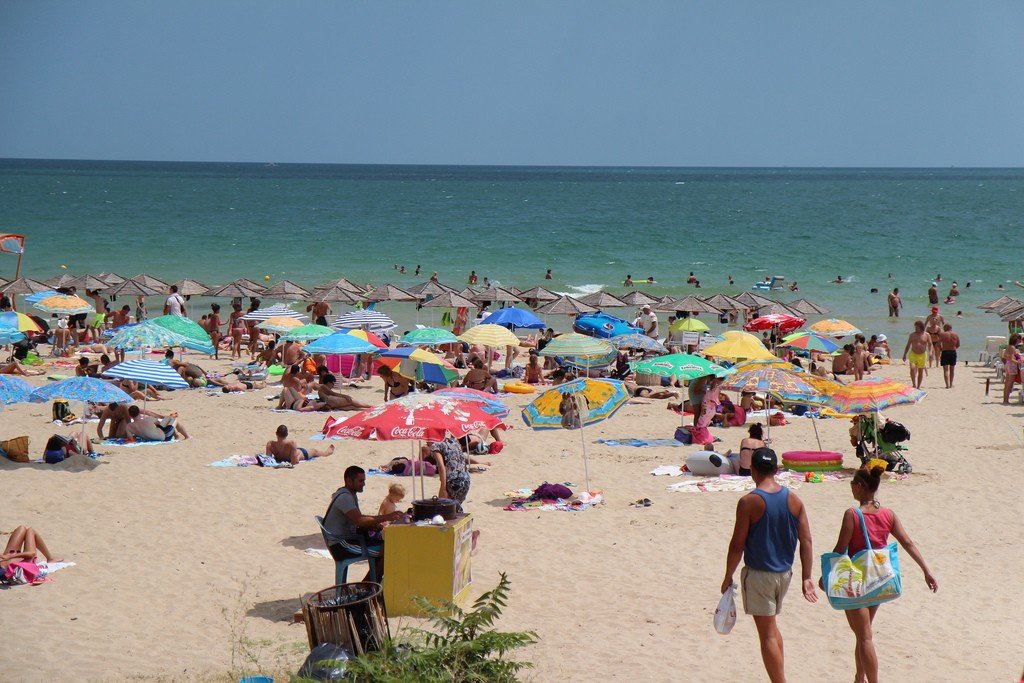
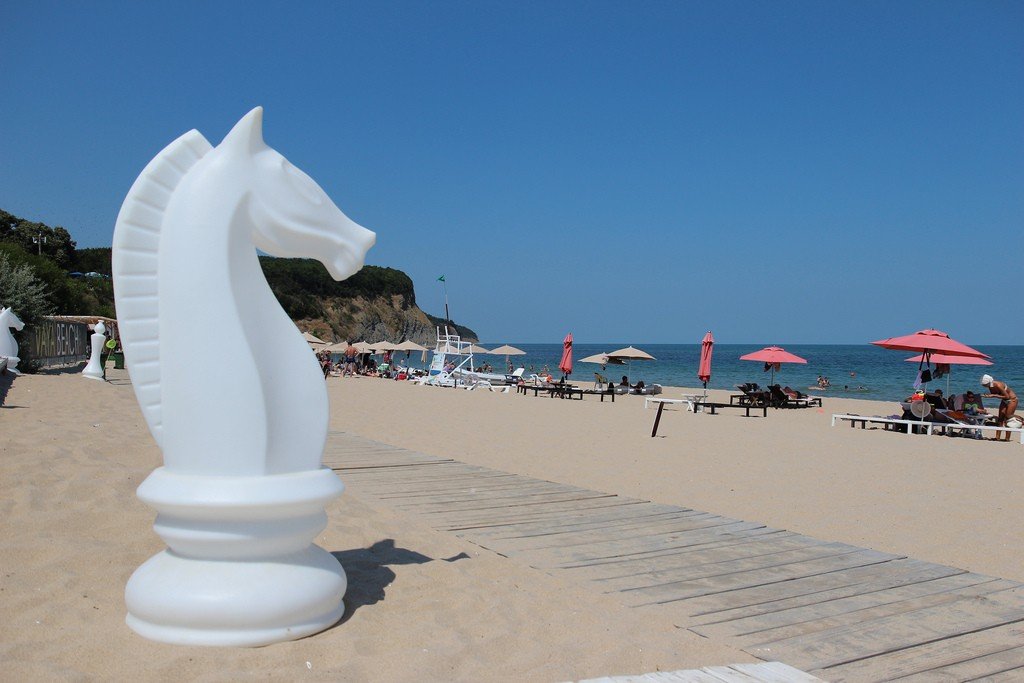
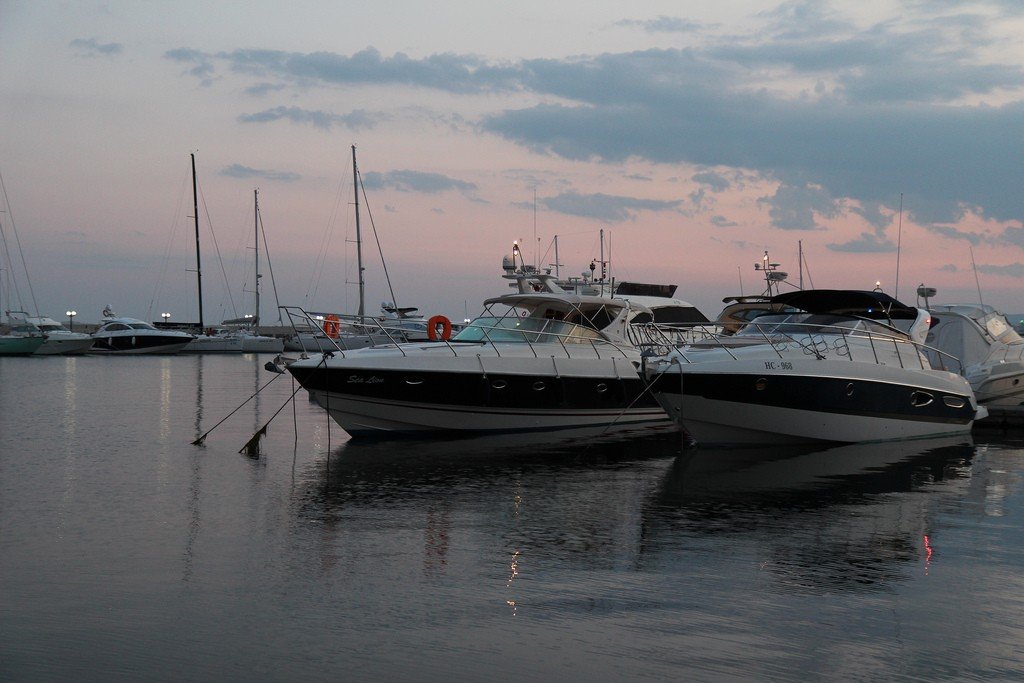
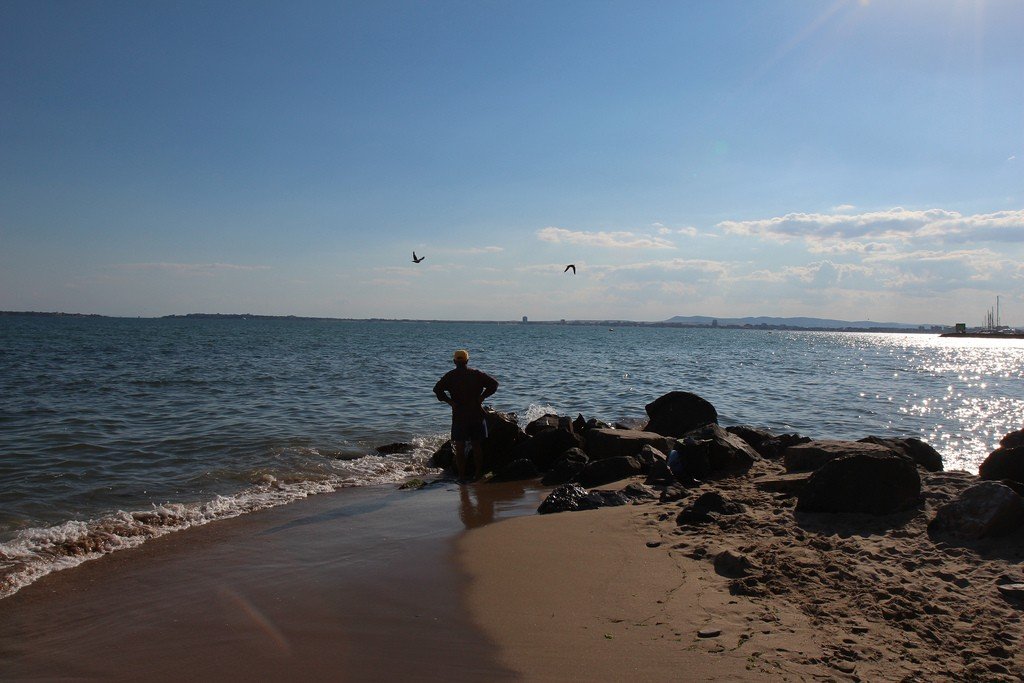
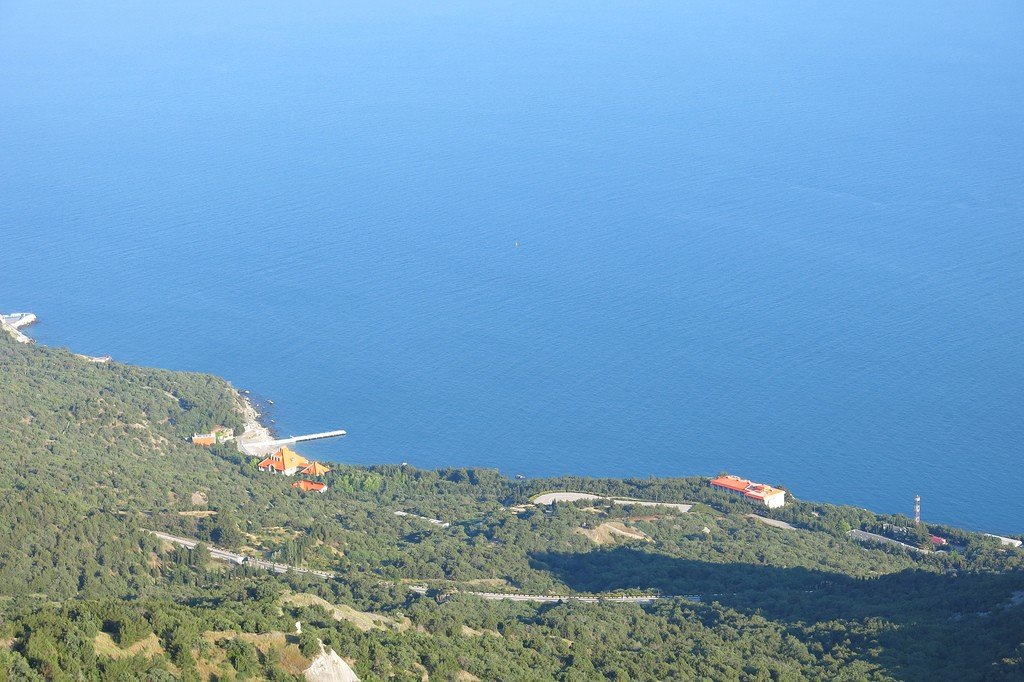
General Information
The Black Sea has an area of 422,000 km² (436,400 km² according to other sources). The outline of the Black Sea resembles an oval with a greatest axis of about 1,150 km. The greatest length of the sea from north to south is 580 km. The greatest depth is 2210 meters, the average depth is 1240 meters.
.The sea washes the coasts of Russia, Ukraine, Romania, Bulgaria, Turkey and Georgia. The unrecognized state entity of Abkhazia is located on the northeastern coast of the Black Sea.
.
A characteristic feature of the Black Sea is the complete (except for a number of anaerobic bacteria) lack of life at depths greater than 150-200 meters due to the saturation of deep water layers with hydrogen sulfide. The Black Sea is an important transportation area, as well as one of the largest resort regions in Eurasia.
.
In addition, the Black Sea retains an important strategic and military significance. Sevastopol and Novorossiysk are home to the main military bases of the Russian Black Sea Fleet.
.
The ancient Greek name of the sea is Pontus Axine (Greek Πόντος Ἄξενος, “Inhospitable Sea”). Strabo’s Geography suggests that the sea received this name because of the difficulty of navigation, and the savage hostile tribes that inhabited its shores. Later, after the successful development of its shores by Greek colonists, the sea was called Pontus Euxine (Greek Πόντος Εὔξενος, “Hospitable Sea”). However, Strabo (1.2.10) mentions that in antiquity the Black Sea was also called simply “sea” (pontos).
.In ancient Russia X-XVI centuries in chronicles met the name “Russian Sea”, in some sources the sea is called “Scythian”. The modern name “Black Sea” has found its corresponding representation in most languages: Greek Μαύρη θάλασσα, Bulgarian Black Sea, Georgian. შავი ზღვა, Romanian. Marea Neagră, English Black Sea, Turkish. Karadeniz, Ukr. Chorne Sea, etc. The earliest sources mentioning this name date back to the 13th century, but there are certain indications that it was used earlier. There are a number of hypotheses as to the reasons for the origin of this name:
.Turks and other conquerors who tried to conquer the population of the coast of the sea, met a fierce response from the Circassians, Adygs and other tribes, for which they nicknamed the sea Karadengiz – Black, inhospitable.
.Another reason, according to some researchers, may be the fact that during storms the water in the sea becomes very dark. However, storms in the Black Sea are not too frequent, and water darkens during storms in all seas of the earth. Another hypothesis of the origin of the name is based on the fact that metal objects (such as anchors), lowered into the water of the sea deeper than 150 meters for a long time, covered with a patina of black color due to the action of hydrogen sulfide.
.
Another hypothesis is related to the “color” designation of the sides of the world adopted in a number of Asian countries, where “black” denoted the north, respectively, the Black Sea – the northern sea.
.One of the most widespread hypotheses is the assumption that the name is associated with the memories of the Bosphorus breach 7500-5000 years ago, the consequence of which was a catastrophic rise in sea level by almost 100 meters, which in turn led to the flooding of a vast shelf zone and the formation of the Sea of Azov.
.There is a Turkish legend, according to which in the waters of the Black Sea rests a bogatyr sword, which was thrown there at the request of the dying wizard Ali. Because of this, the sea waves, trying to splash out of its depths deadly weapon, and is colored black.
.
The shores of the Black Sea are indented little and mostly in its northern part. The only large peninsula is the Crimean Peninsula. The largest bays are the Yagorlytsky, Tendrovsky, Dzharylgachsky, Karkinitsky, Kalamitsky and Feodosiysky in Ukraine, Varna and Burgas in Bulgaria, Sinopsky and Samsunsky – near the southern shores of the sea, in Turkey. In the north and northwest, estuaries overflow at the inflows of rivers. The total length of the coastline is 3400 kilometers.
.A number of parts of the sea coast have their own names: the South Coast of Crimea in Ukraine, the Black Sea coast of the Caucasus in Russia, the Rumelian coast and the Anatolian coast in Turkey. In the west and northwest, the coasts are low-lying, sometimes precipitous; in Crimea, they are mostly low-lying, except for the southern mountainous coasts. On the eastern and southern shores, the sea is closely approached by the spurs of the Caucasus and Pontic Mountains.
.
There are few islands in the Black Sea. The largest are Berezan and Zmeiny (both with an area of less than 1 km²).
.The following major rivers flow into the Black Sea: Danube, Dnieper, Dniester, as well as the smaller rivers Mzymta, Bzyb, Rioni, Kodor (Kodori), Inguri (in the east of the sea), Chorokh, Kyzyl-Irmak, Ashley-Irmak, Sakarya (in the south), Southern Bug (in the north). The Black Sea fills an isolated depression located between Southeastern Europe and the Asia Minor Peninsula. This depression was formed during the Miocene Epoch, in the process of active horizon formation, which divided the ancient Tethys Ocean into several separate bodies of water (from which later, except for the Black Sea, formed the Sea of Azov, the Aral Sea and the Caspian Sea).
.
One of the hypotheses of the origin of the Black Sea (in particular, the conclusions of the participants of the international oceanographic expedition on the scientific ship “Aquanaut” in 1993) states that 7500 years ago it was the deepest freshwater lake on earth, the level was lower than the present one hundred and more meters. At the end of the Ice Age, the level of the world’s oceans rose and the Bosphorus Isthmus was breached. A total of 100,000 km² (the most fertile land already cultivated by humans) was flooded. The flooding of these vast lands may have been the prototype for the myth of the Flood. The emergence of the Black Sea according to this hypothesis was presumably accompanied by the mass death of all the freshwater living world of the lake, the decomposition product of which – hydrogen sulfide – reaches high concentrations at the bottom of the sea.
.The Black Sea depression consists of two parts – western and eastern, divided by a rise that is a natural extension of the Crimean Peninsula. The northwestern part of the sea is characterized by a relatively wide shelf strip (up to 190 km). The southern coast (belonging to Turkey) and the eastern coast (Georgia) is steeper, the shelf strip does not exceed 20 km and is cut by a number of canyons and depressions. Depths off the coasts of Crimea and the Black Sea coast of the Caucasus increase extremely rapidly, reaching depths of over 500 m already a few kilometers from the coastline. The sea reaches its maximum depth (2210 m) in the central part, south of Yalta.
.
In the composition of rocks that form the bottom of the sea, in the coastal zone dominated by coarse clastic deposits: pebbles, gravel, sand. With distance from the coast they are replaced by fine-grained sands and siltstones. In the northwestern part of the Black Sea, coquina shells are widespread; pelitic silts are common for the slope and bed of the sea depression.
.
Among the main mineral deposits on the seabed are: oil and natural gas on the northwestern shelf; coastal placers of titanomagnetite sands (Taman Peninsula, Caucasus coast). The Black Sea is the world’s largest meromictic (with unmixed water levels) body of water. The upper layer of water (mixolimnion) lying up to the depth of 150 meters, cooler, less dense and less salty, saturated with oxygen, is separated from the lower, warmer, salty and dense, saturated with hydrogen sulfide layer (monimolimnion) by a chemocline (boundary layer between aerobic and anaerobic zones). There is no unified generally recognized explanation of the origin of hydrogen sulfide in the Black Sea yet. There is an opinion that hydrogen sulfide in the Black Sea is formed mainly as a result of vital activity of sulfate-reducing bacteria, sharply expressed stratification of water and weak vertical exchange. There is also a theory that hydrogen sulfide was formed by the decomposition of freshwater animals that died when salty Mediterranean waters intruded during the formation of the Bosphorus and Dardanelles.
.
Some studies in recent years allow us to speak about the Black Sea as a giant reservoir of not only hydrogen sulfide, but also methane, released, most likely, also in the process of activity of microorganisms, as well as from the bottom of the sea.
.The water balance of the Black Sea is made up of the following components:
- atmospheric precipitation (230 km³ per year);
- mainland runoff (310 km³ per year);
- water inflow from the Sea of Azov (30 km³ per year);
- evaporation of water from the sea surface (-360 km³ per year);
- water export through the Bosphorus Strait (-210 km³ per year).
The amount of precipitation from the Sea of Azov and river runoff exceeds the amount of evaporation from the surface, causing the level of the Black Sea to exceed that of the Sea of Marmara. Due to this, an upper current is formed, directed from the Black Sea through the Bosphorus Strait. The lower current, observed in the lower water layers, is less strong and is directed through the Bosporus in the opposite direction. The interaction of these currents further supports the vertical stratification of the sea, and is also used by fish to migrate between seas.
.
It should be noted that due to the difficult exchange of water with the Atlantic Ocean, there are practically no tides in the Black Sea. The circulation of water in the sea covers only the surface layer of water. This layer of water has a salinity of about 18 ppm (in the Mediterranean – 37 ppm) and is saturated with oxygen and other elements necessary for the activity of living organisms. These layers in the Black Sea are subject to circular circulation in anticyclonic direction along the entire perimeter of the water body. At the same time, in the western and eastern parts of the sea there are water circulations in cyclonic direction. The temperature of the surface water layers, depending on the time of year, varies from 8 to 30 °C.
.
The lower layer, due to the saturation of hydrogen sulfide, does not contain living organisms, except for a number of anaerobic sulfur bacteria (the product of which is hydrogen sulfide). Salinity here rises to 22-22.5 ppm and the average temperature is ~8.5°C.
.The climate of the Black Sea, due to its mid-continental position, is mainly continental. Only the southern coast of Crimea and the Black Sea coast of the Caucasus are protected by mountains from cold northern winds and as a result have a mild Mediterranean climate.
The climate of the Black Sea is mainly continental.
A significant influence on the weather over the Black Sea is exerted by the Atlantic Ocean, over which most cyclones originate, bringing bad weather and storms to the sea. On the north-eastern coast of the sea, especially near Novorossiysk, low mountains are no barrier for cold northern air masses, which, falling over them, cause a strong cold wind (bora), locals call it Nord-Ost. South-western winds usually bring warm and quite humid Mediterranean air masses to the Black Sea region. As a result, most of the sea area is characterized by warm, wet winters and hot, dry summers.
.
The average January temperature in the northern part of the Black Sea is -3 °C, but can drop to -30 °C. In the territories adjacent to the southern coast of Crimea and the Caucasus coast, winter is much milder: temperatures rarely fall below 0 °C. Snow does, however, fall periodically in all areas of the sea. The average July temperature in the north of the sea is 22-23°C. Maximum temperatures are not so high due to the softening effect of the water reservoir and usually do not exceed 35 °C.
.
The greatest amount of precipitation in the Black Sea region falls on the Caucasus coast (up to 1500 mm per year), the least – in the north-western part of the sea (about 300 mm per year). Cloudiness for the year averages 60% with a maximum in winter and a minimum in summer.
.
The plant world of the sea includes 270 species of multicellular green, brown, red bottom algae (Cystosira, Phyllophora, Zostera, Cladophora, Ulva, Enteromorpha, etc.). There are at least six hundred species in the phytoplankton of the Black Sea. Among them are dinoflagellates – shell flagellates (prorocentrum micans, ceratium furca, small Scrippsiella trochoidea, etc.), dinoflagellates (dinophysis, protoperidinium, alexandrium), various diatom algae, etc. The fauna of the Black Sea is notable. The fauna of the Black Sea is noticeably poorer than that of the Mediterranean Sea. In the Black Sea there are 2.5 thousand species of animals (including 500 species of unicellular animals, 160 species of vertebrates – fish and mammals, 500 species of crustaceans, 200 species of mollusks, the rest – invertebrates of different species), for comparison, in the Mediterranean Sea – about 9 thousand species. Among the main reasons for the relative poverty of the sea’s animal life are: the wide range of water salinities, moderately cold water, and the presence of hydrogen sulfide at great depths.
.
In this regard, the Black Sea is suitable for fairly unpretentious species, at all stages of development which do not require great depths.
.The bottom of the Black Sea is home to mussels, oysters, pecten, as well as the predatory mollusk rapana, brought with ships from the Far East. In the crevices of coastal rocks and among the rocks live numerous crabs, there are shrimps, there are various species of jellyfish (the most common cornerot and aurelia), actinia, sponges.
.Among the fish found in the Black Sea: various species of gobies (goby-headed goby, goby-knut, goby-kruglyak, goby-martovik, goby-rotan), Azov hamsa, Black Sea hamsa (anchovy), catran shark, glossy flounder, mullet of five species, loufar, merluza (hake), sea ruff, mullet (common Black Sea sultana), haddock, mackerel, horse mackerel, Black Sea-Azov herring, Black Sea-Azov tulka, etc., and others. Sturgeons (beluga, starred sturgeon, Black Sea-Azov (Russian) and Atlantic sturgeon) are also found.
.
Among the dangerous fish of the Black Sea – sea dragon (the most dangerous – poisonous barbs of the dorsal fin and gill covers), Black Sea and notable scorpion, stingray-tail (sea cat) with poisonous spines on the tail.
.Among birds, gulls, petrels, mourning ducks, cormorants and a number of other species are common. Mammals are represented in the Black Sea by two species of dolphins (the white-sided dolphin and the afalina), the Azov-Black Sea common porpoise (often called the Azov dolphin), and the white-bellied seal.
.Some animal species that do not live in the Black Sea are often brought into it through the Bosporus and Dardanelles straits by the currents or arrive independently.
.The history of the study of the Black Sea began in ancient times, with the voyages of the Greeks, who founded their settlements on the shores of the sea. Already in the IV century B.C. periplos – ancient logs of the sea – were compiled. Later, there is fragmentary information about the voyages of merchants from Novgorod and Kiev to Constantinople.
.
Another milestone on the way to the study of the Black Sea – the voyage of the ship “Fortress” from Azov to Constantinople in 1696. Peter I, equipping the ship for the voyage, gave the order to produce on the way of its movement cartographic work. As a result, a “direct drawing of the Black Sea from Kerch to Tsar Grad” was made, depth measurements were taken.
.
More serious studies of the Black Sea date back to the late 18th and 19th centuries. In particular, at the turn of these centuries, Russian scientists academicians Peter Pallas and Middendorf studied the properties of the waters and fauna of the Black Sea. In 1816 appeared the description of the Black Sea coast, made by F. F. Bellingshausen. F. Bellingshausen, in 1817 the first map of the Black Sea was published, in 1842 – the first atlas, in 1851 – the Black Sea lotion.
.
The beginning of systematic scientific research of the Black Sea was marked by two events of the late 19th century – the study of the Bosporus currents (1881-1882) and two oceanographic depth-finding expeditions (1890-1891).
.Since 1871 in Sevastopol operates biological station (now the Institute of Biology of the South Seas), which was engaged in systematic studies of the living world of the Black Sea. At the end of the XIX century, an expedition led by I. B. Spindler discovered saturation of the deep layers of the sea with hydrogen sulfide; later a member of the expedition, the famous Russian chemist N. D. Zelinsky gave an explanation for this phenomenon.
.The study of the Black Sea continued after the October Revolution of 1917. In 1919 in Kerch organized ichthyological station (later transformed into the Azov-Black Sea Institute of Fisheries and Oceanography, now the Southern Research Institute of Marine Fisheries and Oceanography (YugNIRO)). In 1929, a marine hydrophysical station (now a branch of the Sevastopol Marine Hydrophysical Institute of the National Academy of Sciences of Ukraine) was opened in Katsiveli in the Crimea.
.In Russia, the main research organization studying the Black Sea is the Southern Branch of the Institute of Oceanology of the Russian Academy of Sciences (Gelendzhik, Blue Bay) and a number of others.
.Great transportation importance of the Black Sea for the economy of the states washed by this body of water. A significant volume of maritime transportation consists of tanker voyages, which provide export of oil and oil products from Russian ports (primarily from Novorossiysk and Tuapse) and Georgian ports (Batumi). However, the volumes of hydrocarbons export are significantly constrained by the limited capacity of the Bosporus and Dardanelles straits. The largest oil terminal has been created in Ilyichevsk to receive oil as part of the Odessa-Brody oil pipeline. There is also a project to build the Burgas-Alexandroupolis oil pipeline bypassing the Black Sea straits. Novorossiysk’s oil terminals are capable of receiving supertankers. In addition to oil and refined products, metals, mineral fertilizers, machinery and equipment, timber, lumber, grain, etc. are exported from Russian and Ukrainian Black Sea ports. The main volumes of imports to the Black Sea ports of Russia and Ukraine are consumer goods, foodstuffs, a number of raw materials, etc. The Black Sea ports of Russia and Ukraine are also used for the export of consumer goods, foodstuffs, and a number of raw materials. Container transportation is widely developed in the Black Sea basin, and there are large container terminals. Transportation by means of lighters is growing; there are railway ferry crossings Ilyichevsk (Ukraine) – Varna (Bulgaria) and Ilyichevsk (Ukraine) – Batumi (Georgia). Sea passenger transportation is also developed in the Black Sea (however, after the collapse of the USSR their volume has significantly decreased). The international transport corridor TRACECA (Transport Corridor Europe – Caucasus – Asia) passes through the Black Sea. Black Sea ports are the end points of a number of Pan-European transport corridors. The largest port cities on the Black Sea are Novorossiysk, Sochi, Tuapse (Russia); Burgas, Varna (Bulgaria); Batumi, Sukhumi, Poti (Georgia); Constanta (Romania); Samsun, Trabzon (Turkey); Odessa, Ilyichevsk, Yuzhny, Kerch, Sevastopol, Yalta (Ukraine). The Don River, which flows into the Sea of Azov, is used as a river waterway connecting the Black Sea with the Caspian Sea (via the Volga-Don Ship Canal and the Volga River), with the Baltic Sea and the White Sea (via the Volga-Baltic Waterway and the White Sea-Baltic Canal). The Danube River is connected to the North Sea through a system of canals. The unique deep-water gas pipeline “Blue Stream” connecting Russia and Turkey is laid on the bottom of the Black Sea. The length of the underwater part of the gas pipeline running between the village of Arkhipo-Osipovka on the Black Sea coast of the Caucasus and the Turkish coast 60 kilometers from the city of Samsun is 396 kilometers. There are plans to expand the capacity of the gas pipeline by laying an additional branch of the pipe.
.
The following fish species are of commercial importance in the Black Sea: mullet, anchovy (hamsa), mackerel, horse mackerel, pike-perch, bream, sturgeon, herring. The main fishing ports are Odessa, Kerch, Novorossiysk, etc.
.
In the last years of XX – early XXI century fishing has significantly reduced due to overfishing and deterioration of the ecological state of the sea. Prohibited bottom trawling and poaching, especially of sturgeons, also pose a significant problem. Thus, only in the second half of 2005, specialists of the Black Sea State Basin Administration for the Protection of Aquatic Living Resources of Ukraine (“Chernomorrybvod”) in the territory of Crimea uncovered 1909 violations of fishery protection legislation, seized 33 tons of fish caught by illegal fishing gear or in prohibited places.
.Favorable climatic conditions in the Black Sea coast determine its development as an important resort region. The largest resort areas on the Black Sea include: Southern coast of Crimea (Yalta, Alushta, Sudak, Koktebel, Feodosia) in Ukraine, the Black Sea coast of the Caucasus (Anapa, Gelendzhik, Sochi) in Russia, Pitsunda, Gagra and Batumi in Georgia, Golden Sands and Sunny Beach in Bulgaria, Mamaia, Eforie in Romania.
.The Black Sea coast of the Caucasus is the main resort region of the Russian Federation. In 2005, it was visited by about 9 million tourists; in 2006, according to forecasts by officials of the Krasnodar region, this region was expected to be visited by at least 11-11.5 million vacationers. There are more than 1000 resorts, sanatoriums and hotels on Russia’s Black Sea coast, and their number is constantly growing. A natural extension of the Russian Black Sea coast is the coast of Abkhazia, whose most important resorts of Gagra and Pitsunda were popular in the Soviet times. The development of the resort industry on the Black Sea coast of the Caucasus is hampered by the relatively short (e.g. compared to the Mediterranean) season, environmental, transportation problems, and in Abkhazia – also by the uncertainty of its status and the threat of a new outbreak of military conflict with Georgia.
.The Black Sea coast and the basin of rivers flowing into it are areas with high anthropogenic impact, densely populated by humans since ancient times. The ecological condition of the Black Sea is generally unfavorable.
.Among the main factors disturbing the equilibrium in the ecological system of the sea are:
.Heavy pollution of rivers flowing into the sea, especially runoff from fields containing mineral fertilizers, especially nitrates and phosphates. This entails overfertilization (eutrophication) of sea waters, and, as a consequence, rapid growth of phytoplankton (“blooming” of the sea – intensive development of blue-green algae), reduction of water transparency, death of multicellular algae.
.Water pollution by oil and oil products (the most polluted areas are the western part of the sea, which accounts for the largest volume of tanker traffic, as well as port areas). As a consequence, this leads to the death of marine animals caught in oil slicks, as well as atmospheric pollution due to the evaporation of oil and oil products from the water surface.
.
Pollution of sea waters by human wastes – discharge of untreated or insufficiently treated sewage, etc.
.Mass catching of fish.
.Prohibited but widely used bottom trawling, destroying bottom biocenoses.
.Changes in the composition, reduction in the number of individuals and mutation of the aquatic world under the influence of anthropogenic factors (including the replacement of indigenous species of the natural world by exotic ones appearing as a result of human impact). Thus, for example, according to the estimates of specialists from the Odessa branch of the South Research Institute of Oceanography, only for one decade (from 1976 to 1987) the population of the Black Sea afalina decreased from 56 thousand to seven thousand individuals.
.
According to a number of experts, the ecological condition of the Black Sea has worsened over the last decade despite the decline in economic activity in a number of Black Sea countries.
Viktor Tarasenko, president of the Crimean Academy of Sciences, expressed the opinion that the Black Sea is the dirtiest sea in the world.
To protect the environment, the Black Sea is the most polluted sea in the world.
To protect the environment in the Black Sea area, the ACCOBAMS agreement (“Agreement on the Conservation of Cetaceans of the Black Sea, Mediterranean Sea and Contiguous Atlantik Area”) was adopted in 1998, where one of the main issues is the protection of dolphins and whales. The main international document regulating the protection of the Black Sea is the Convention on the Protection of the Black Sea against Pollution, signed by six Black Sea countries – Bulgaria, Georgia, Russia, Romania, Turkey and Ukraine in 1992 in Bucharest (Bucharest Convention). Also in June 1994, the Convention on Cooperation for the Protection and Sustainable Development of the Danube River was signed in Sofia by representatives of Austria, Bulgaria, Croatia, the Czech Republic, Germany, Hungary, Moldavia, Romania, Slovakia, Slovenia, Ukraine and the European Union. As a result of these agreements, the Black Sea Commission (Istanbul) and the International Commission for the Protection of the Danube River (Vienna) were established. These bodies have the function of coordinating environmental programs implemented within the framework of the conventions. The International Black Sea Day is celebrated annually on October 31 in all countries of the Black Sea region.
.